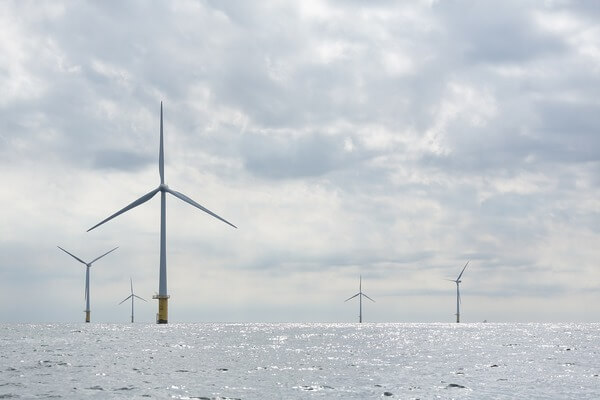News Release from windfair.net
Wind Industry Profile of
Offshore Wind Demand Higher Than Ever
In the shock triggered by the coronavirus pandemic, renewable energies have proven worldwide just how crisis-proof they are. In some European countries, including Germany and Denmark, the share of renewables in the electricity mix has risen to well over 50 percent in recent weeks without any outages or bottlenecks. The importance of renewables will continue to grow in the future, that much is already clear. An example of this can be seen in the Hydrogen Strategy of the European Union presented last week. Especially for the production of green hydrogen, significantly more offshore wind energy will be needed in the future.
Offshore wind is therefore also highly regarded by investors, as can be seen from the record figures from the first half of 2020: Investments in offshore wind rose to a total of 35 billion US dollars, an increase of 319% over the previous year and even significantly higher than the record year 2019 as a whole (revised 31.9 billion US dollars), as the latest figures from BloombergNEF show.
In the first two quarters of this year, investment decisions were made for a total of 28 offshore wind farms. The largest of these is the 1.5-gigawatt Vattenfall Hollandse Zuid wind farm off the coast of the Netherlands, the cost of which alone is estimated at 3.9 billion dollars.
World market leader Great Britain also continues to rely on offshore wind. Here e.g. the 1.1-gigawatt Seagreen project was pushed forward with an estimated 3.8 billion dollars. And expansion is also booming in Asia: in addition to Taiwan, investments are also being made in the Chinese market, where 17 projects have been awarded funding.

Offshore wind energy is in high demand (Image: Pixabay)
Meanwhile other renewables are struggling: Investments in onshore wind energy fell by 21% to 37.5 billion dollars, while investments in solar energy fell by 12% to 54.7 billion dollars according to BloombergNEF.
This difference had been predicted by experts. Albert Cheung, head of analysis at BNEF, comments: “We expected to see Covid-19 affecting renewable energy investment in the first half, via delays in the financing process and to some auction programs. There are signs of that in both solar and onshore wind, but the overall global figure has proved amazingly resilient – thanks to offshore wind.”
The International Energy Agency (IEA) already warned of this drop in investment at the end of May: “The historic plunge in global energy investment is deeply troubling for many reasons,” said Dr Fatih Birol, the IEA’s Executive Director. “It means lost jobs and economic opportunities today, as well as lost energy supply that we might well need tomorrow once the economy recovers. The slowdown in spending on key clean energy technologies also risks undermining the much-needed transition to more resilient and sustainable energy systems.”
In early 2020, global energy investment was still growing at around 2%, which would have been the largest annual increase in spending in six years. But after the COVID-19 crisis brought large parts of the global economy to a standstill within a few months, global investment is now expected to fall by 20% or nearly $400 billion year-on-year, according to the IEA 'World Energy Investment 2020' report.
The boom in offshore wind energy is also expected to slow down in the second half of the year. Tom Harries, head of wind analysis, explains: “The first half of this year also owed a lot to a rush in China to finance and build, in order to take advantage of a feed-in tariff before it expires at the end of 2021. I expect a slowdown in offshore wind investment globally in the second half, with potentially a new spike early next year.”

Green hydrogen could give offshore wind energy another boost (Image: Pixabay)
Much will now also depend on the extent to which renewable energies are integrated into a green recovery after the pandemic. If the environment ministers in the EU have their way, then renewables must play a major role. Germany's Federal Environment Minister Svenja Schulze: “It is imperative that we, as EU environment ministers, are actively involved in the ongoing discussion on shaping Europe's economic recovery. That's why it is so important to me to already address the green recovery during our first video conference to kick off the German Council Presidency. Now is the time to set a course that ensures we do not return to business as usual, but make a genuine recovery that supports a viable and environmentally compatible economy and society.”
- Author:
- Katrin Radtke
- Email:
- press@windfair.net
- Keywords:
- offshore, investment, investor, Europe, corona, COVID-19, worldwide, renewable energy, wind, onshore, solar, record, hydrogen, green recovery




























